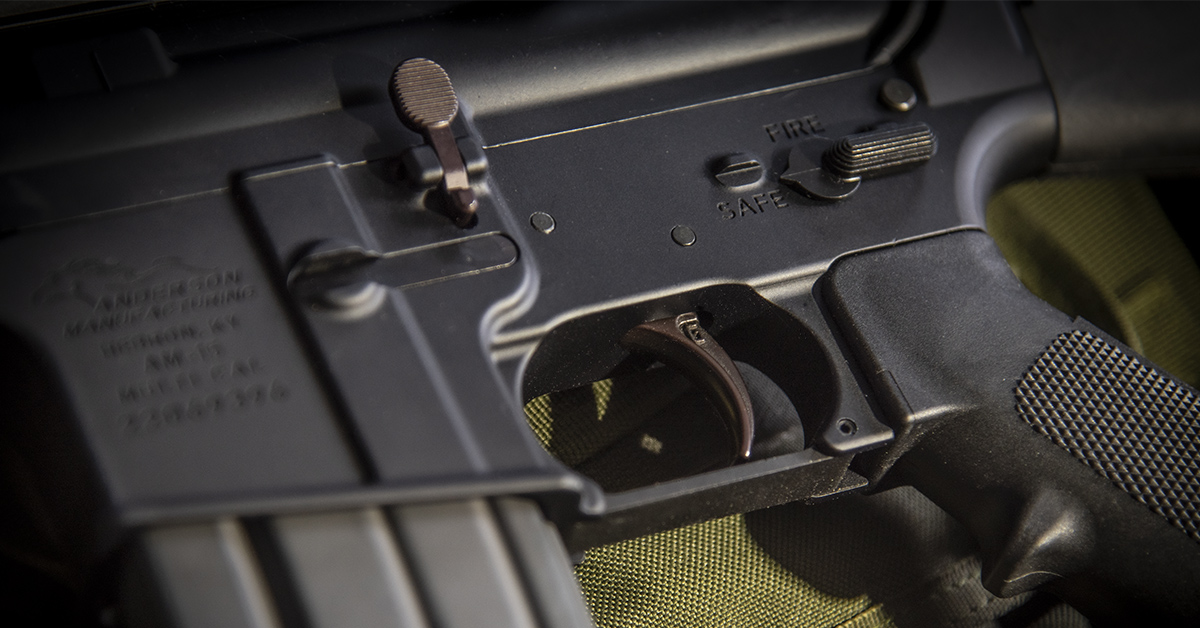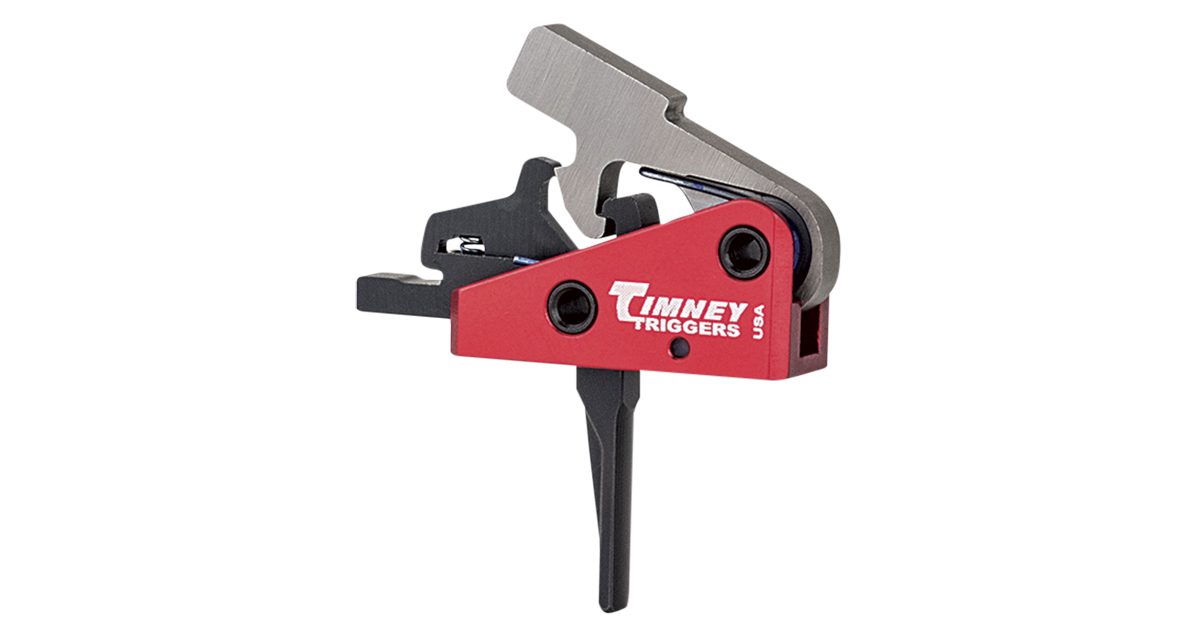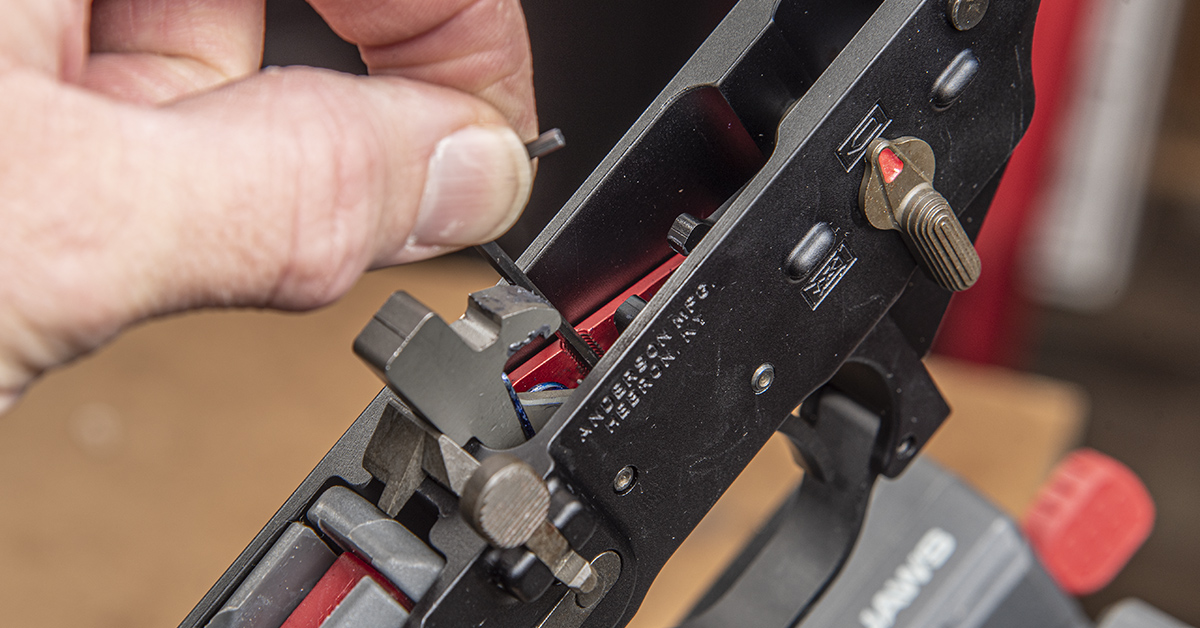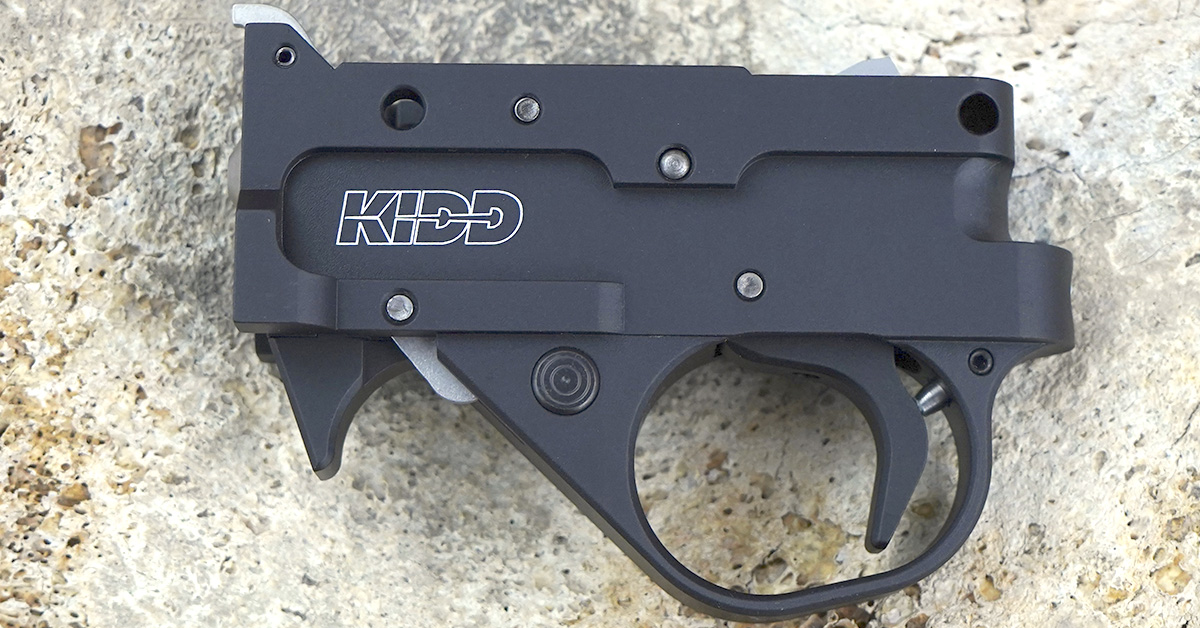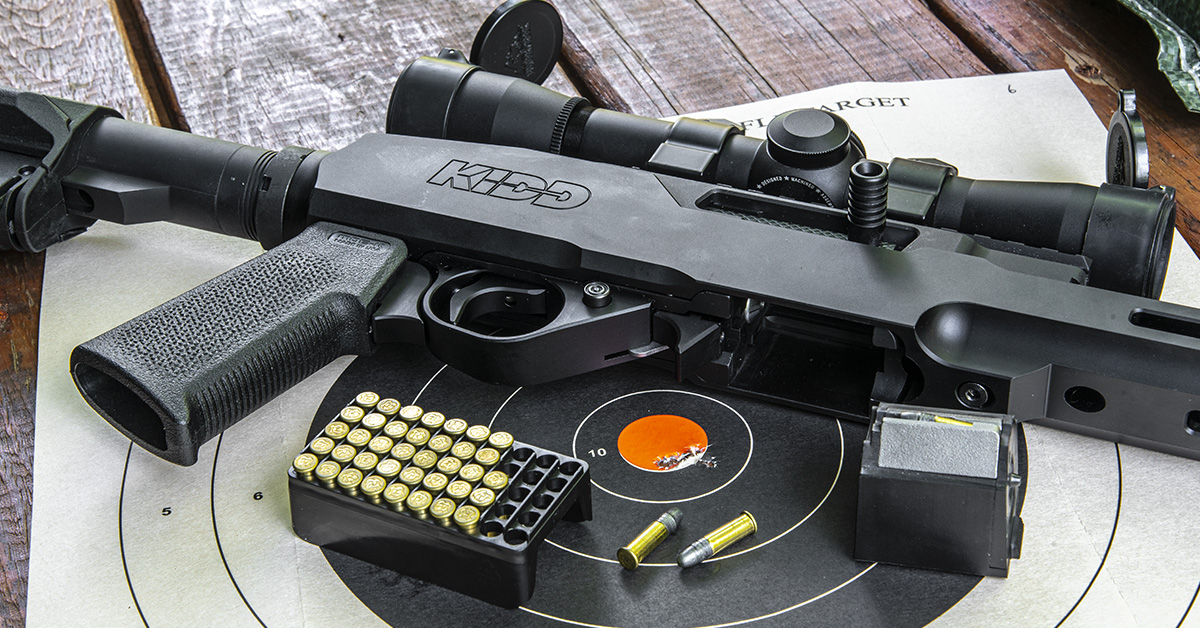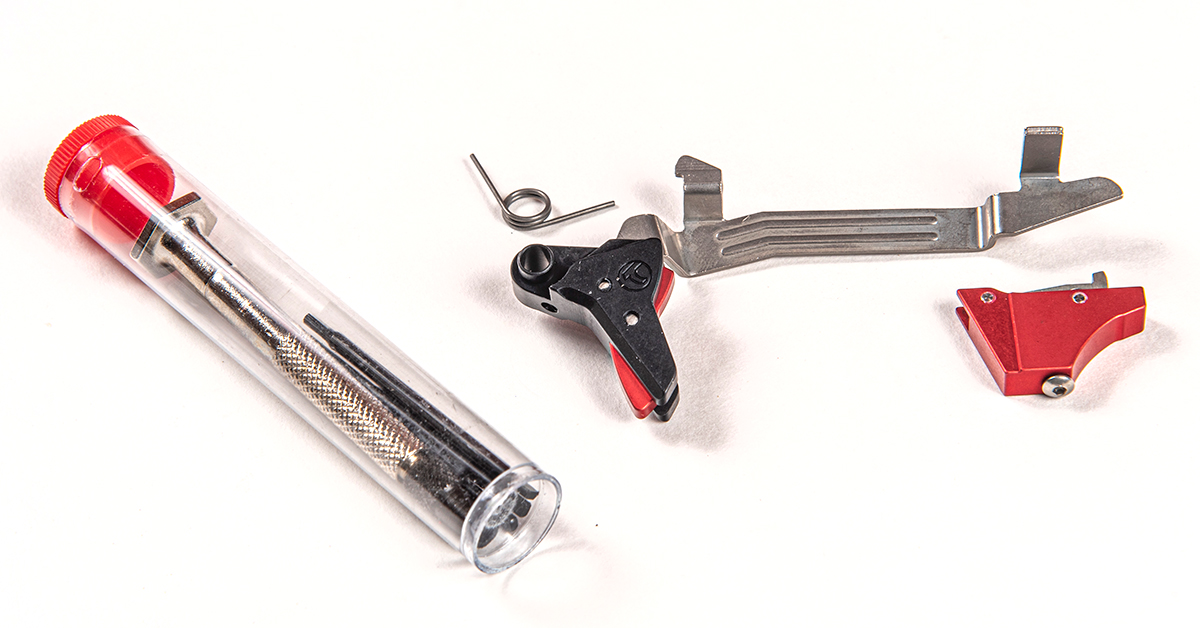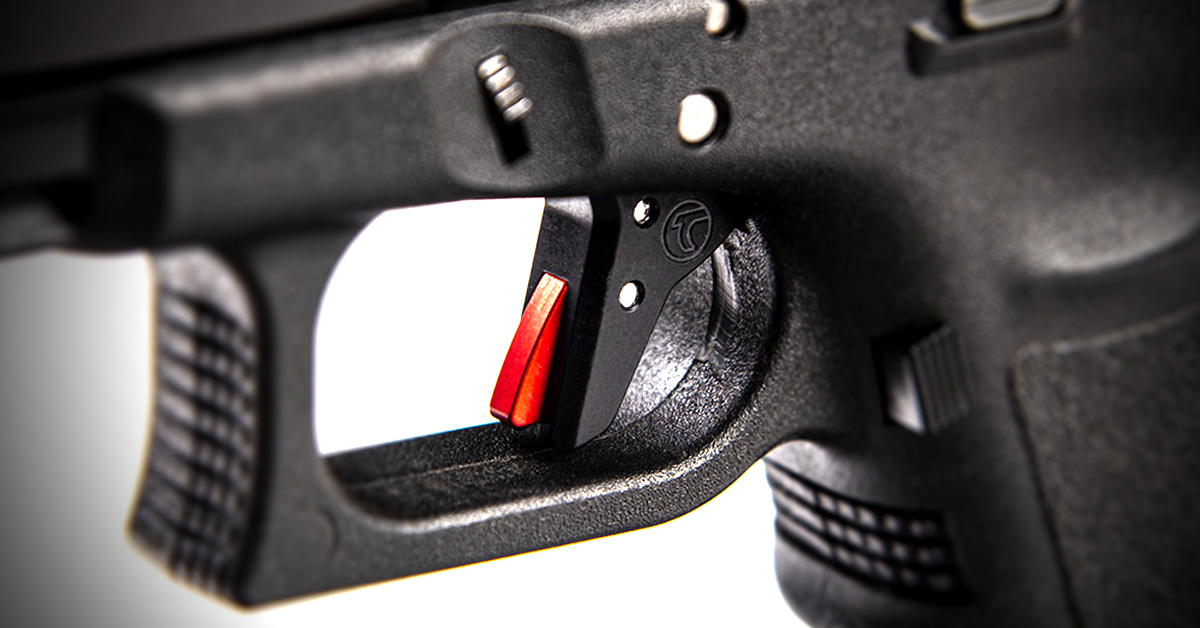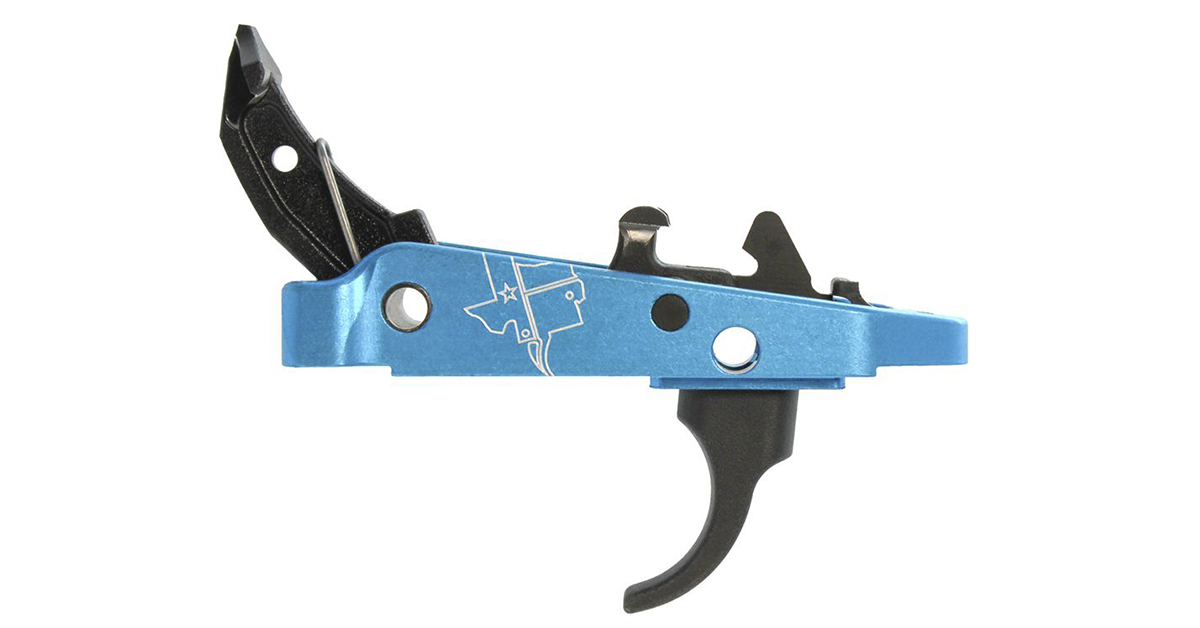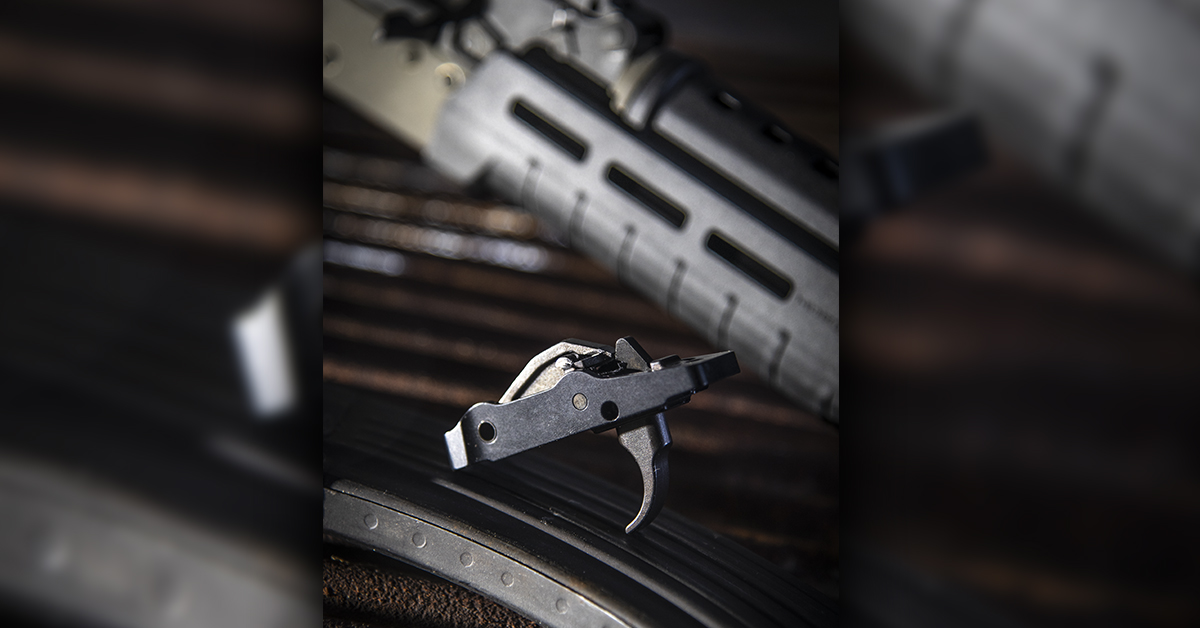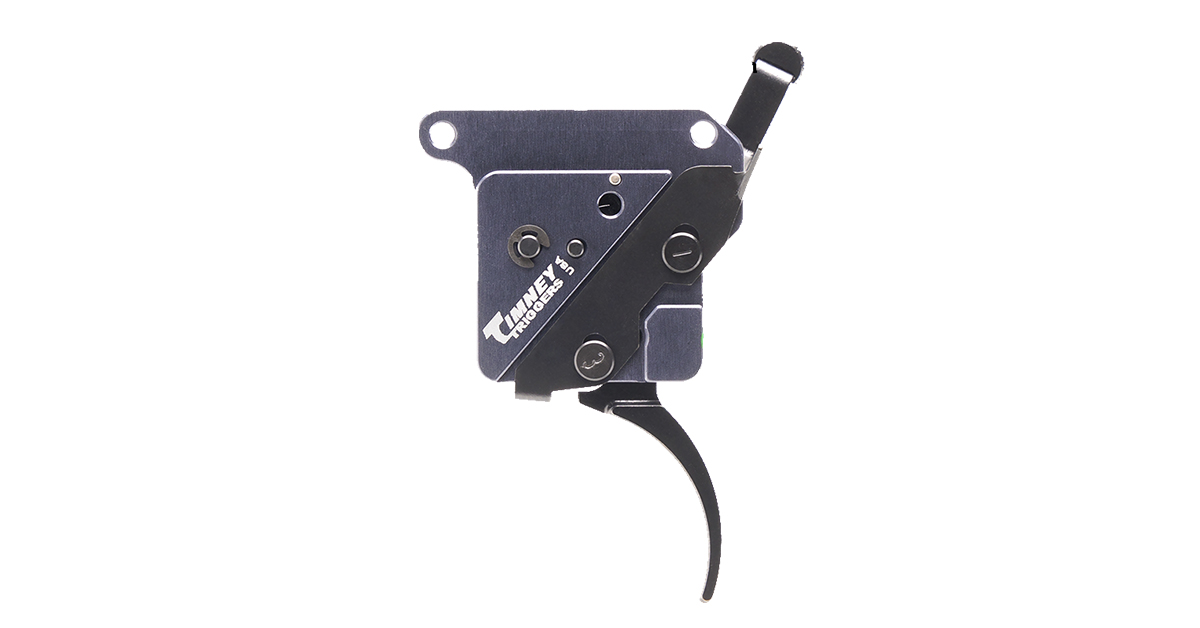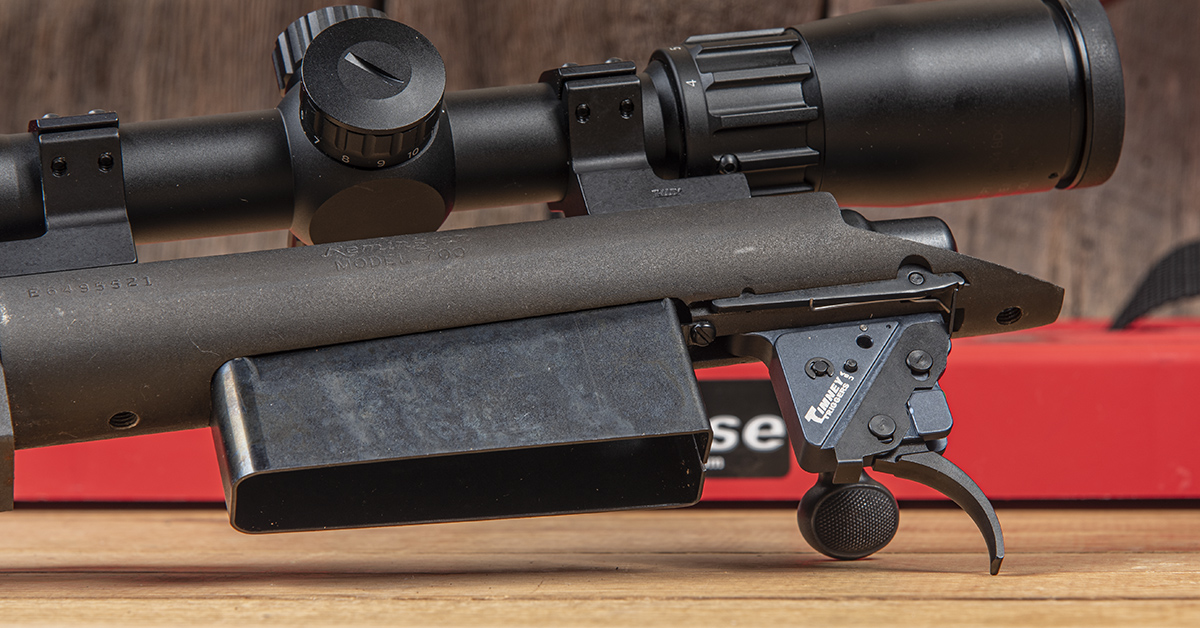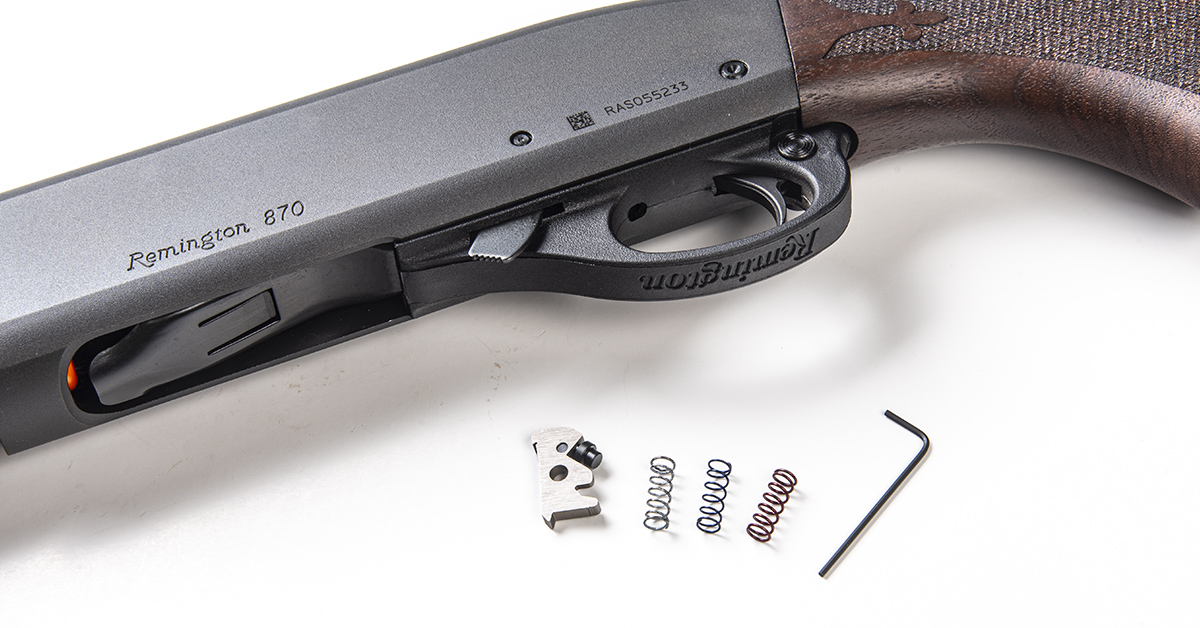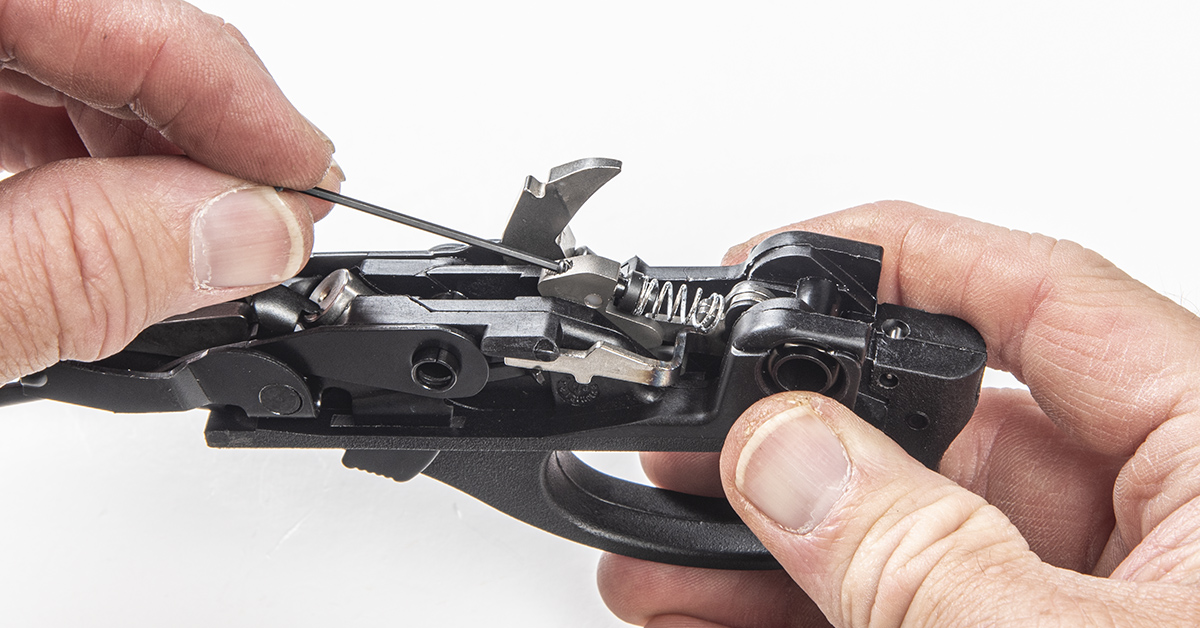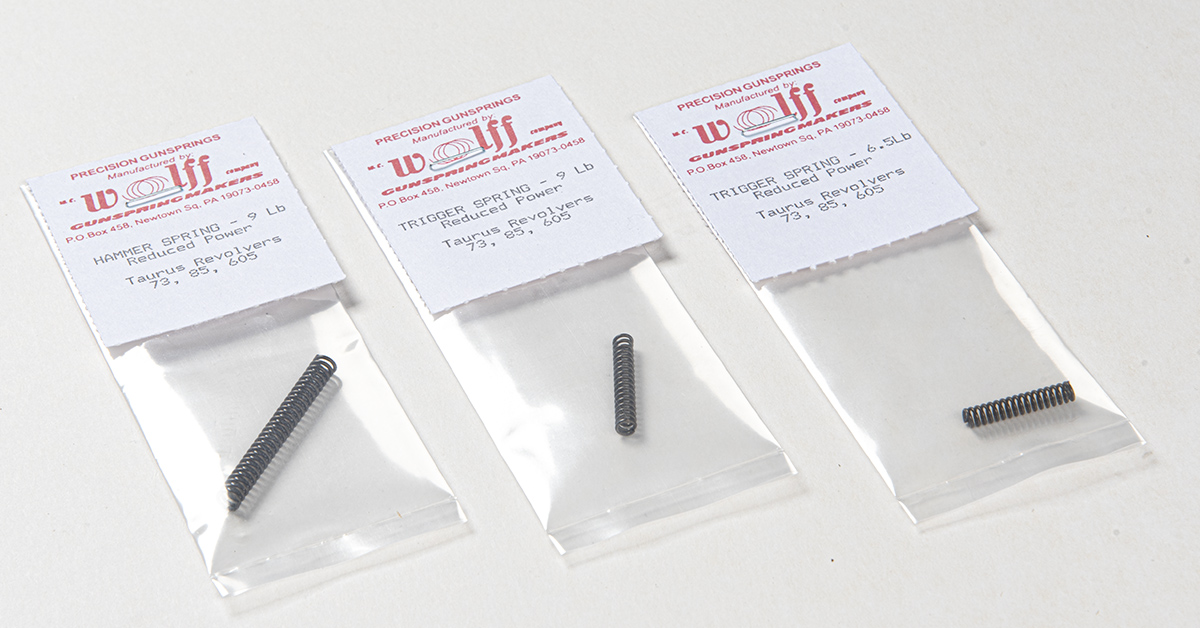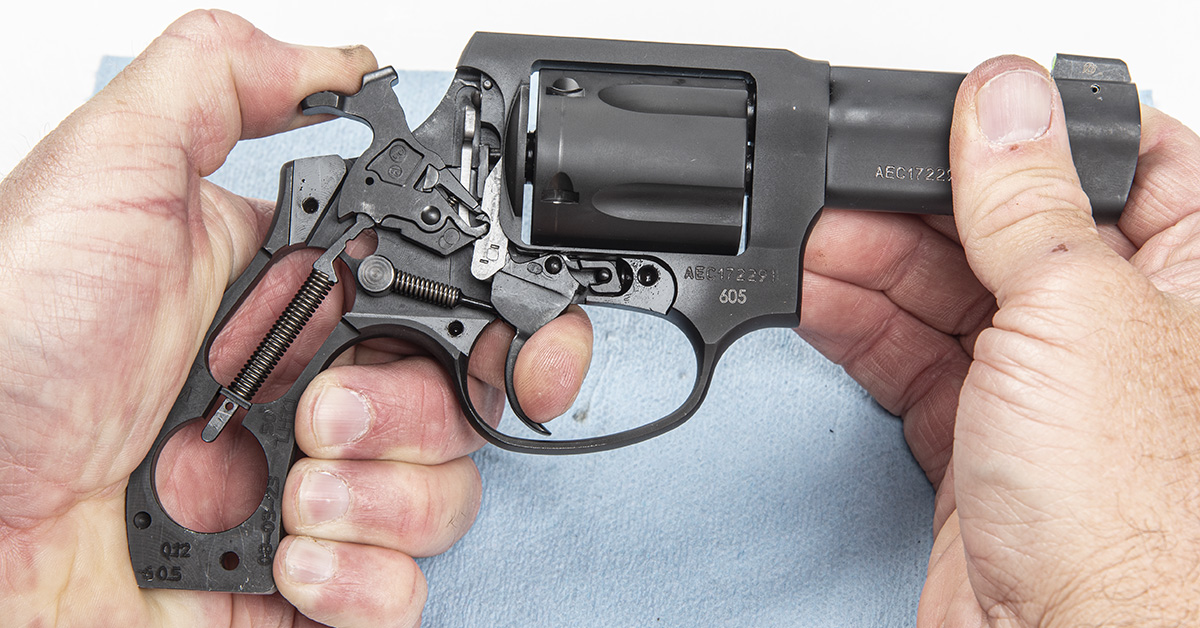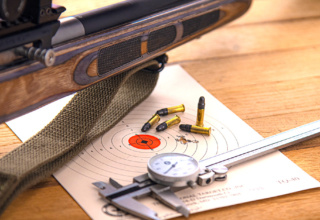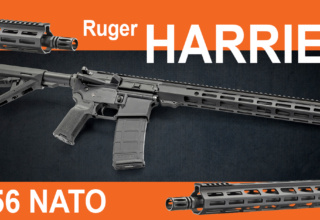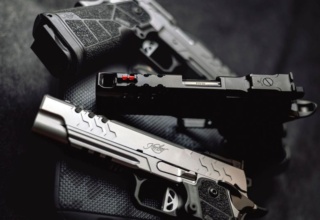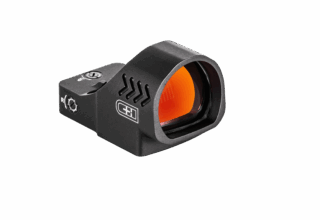If there is one area of a gun that can immediately improve your shooting performance, it is the trigger. Here are 8 trigger upgrades we’ve tried…and stuck with.
by Rob Reaser
One thing we can all cheer about is that the triggers placed in factory guns are a far cry better than they used to be. The reason so many factory triggers were so lousy for so long had mostly to do with cost efficiencies and litigation mitigation. Well-manufactured, precision triggers cost more to build and triggers with short sear travel and angel’s breath pull weights are like rare earth magnets for personal injury lawyers and the fools who hire them to try and make bank. So, yeah, there are legit reasons why factory triggers have earned a not-so-desirable reputation among serious shooters.
The triggers that are rolling out of mass-production facilities today, though, are a much better breed. Not all of them, of course, but the big-name manufacturers seem to have recognized that even the “average” firearm enthusiast has, today, elevated tastes and expectations when it comes to factory trigger performance.
Nevertheless, few factory triggers will offer the same performance quality or manufacturing precision as a high-end aftermarket trigger. The question is (at least the question new shooters often have), “Is an aftermarket trigger upgrade worth the effort and expense?”
Is water wet?
The answer is a resounding, “Yes!” in our estimation, and here’s why.
Aftermarket triggers are designed to provide that clichéd-but-true crisp sear break. This, generally speaking, encompasses the distance the sear engagement surfaces of the trigger and hammer or firing pin systems must travel before they disengage from one another, and the quality of that separation. Does the sear break happen at the snap of a finger or is it more of a gradual, rolling break? The ideal is for the sear to break (to use the other common trigger cliché) like a glass rod — intact one moment, broken in a micro millisecond the next.
The reason we desire such a short and clean sear break is to reduce or eliminate shooter-induced shot disturbance. It may seem like a lot to do about nothing from a novice perspective, but experienced shooters understand that a short and decisive sear break promotes accuracy potential. Aftermarket trigger manufacturers achieve this through precision engineering and experimenting with sear surface angles, component materials, manufacturing techniques, and surface finishes.
Another advantage to aftermarket triggers is that their pull weight is typically less than that of a factory trigger. Factory triggers tend to have heavier pull weights as a safety consideration. Too light of a trigger pull weight and a gun could fire prematurely due to careless operation (excitement, fear, wearing gloves, sympathetic muscle contraction, etcetera) or a hard blow. Heavier triggers somewhat mitigate this potential. The downside to a heavier trigger, though, is that the added force to move the trigger off the sear can cause its own problems. A harder pull weight can complicate a smooth, straight trigger pull and cause the added muscle effort to induce torque in the grip and trigger finger that may disrupt the shot.
In addition to cleaner breaks and lighter pull weights, many aftermarket triggers offer adjustability in the pull weight, overtravel adjustment (distance between the time the sear beaks and the trigger stops rearward travel), and a selection of trigger shoes (adds a larger surface area to the trigger). The enhanced performance and ability to customize the trigger to meet specific shooter needs is what makes aftermarket triggers so appealing and, for serious shooters, necessary.
At Shoot ON, we’ve done many trigger upgrades across many gun platforms. All are simple DIY projects requiring only basic tools like flat punches, quality driver bits, a small hammer, and perhaps a bench block. What we want to do here is share with you the aftermarket triggers that have stood out to us and that we can recommend for improving your downrange performance across several different firearm platforms.
AR Platform
Geissele Super Semi-Automatic
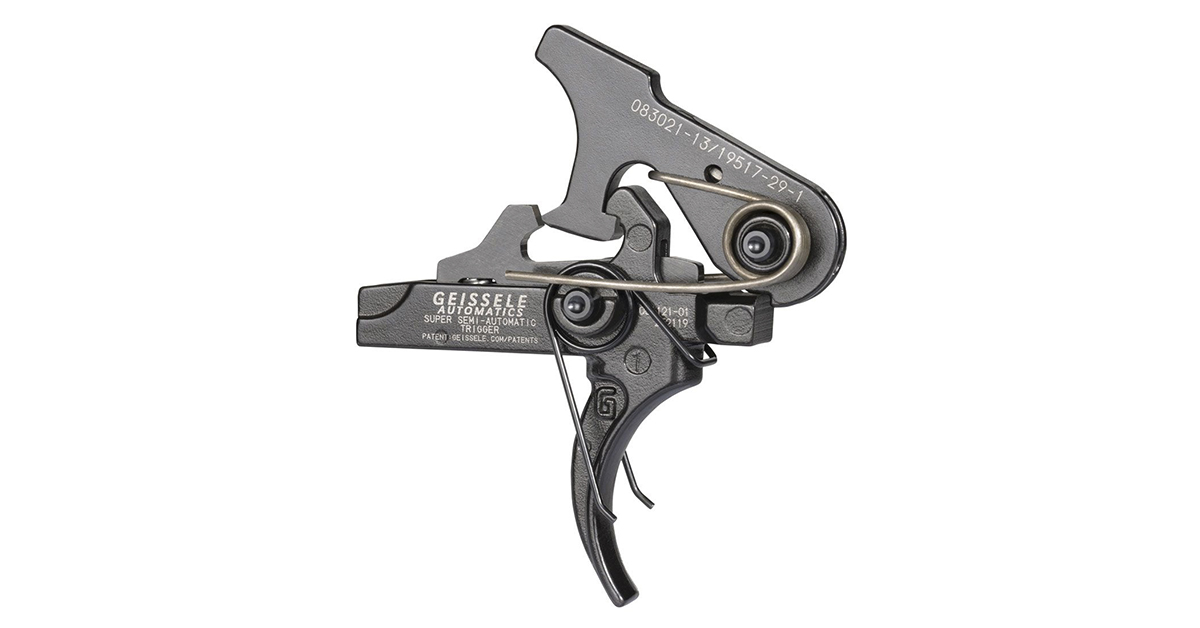 There are scads of aftermarket triggers available for the AR platform. For those who favor the more traditional two-piece (trigger/hammer) trigger group, we have found none better than the Super Semi-Automatic from Geissele Automatics. Unlike the heavy, gritty MILSPEC trigger that likely came with your AR, the Geissele SSA is a dream to use with its light first-stage take-up and decisive sear break. This trigger group installs just like the MILSPEC trigger, so it is simply two pins out, two pins in, and you’re done. As AR triggers go, the SSA isn’t cheap, but it will deliver the performance you will demand for accurate, controlled shots.
There are scads of aftermarket triggers available for the AR platform. For those who favor the more traditional two-piece (trigger/hammer) trigger group, we have found none better than the Super Semi-Automatic from Geissele Automatics. Unlike the heavy, gritty MILSPEC trigger that likely came with your AR, the Geissele SSA is a dream to use with its light first-stage take-up and decisive sear break. This trigger group installs just like the MILSPEC trigger, so it is simply two pins out, two pins in, and you’re done. As AR triggers go, the SSA isn’t cheap, but it will deliver the performance you will demand for accurate, controlled shots.
- Platform: AR15/AR10
- Type: two-stage
- 1st Stage: 2.75 – 3 lbs.
- 2nd Stage: 1.5 – 1.75 lbs.
- Total Pull Weight Range: 4.25 – 4.75 lbs.
- Adjustable: no
- Trigger Type: M4 curved
Timney AR Targa
If you like the feel of a short-travel single-stage trigger but want the shot setup afforded by two-stage triggers, the AR Targa from Timney is a solid bet. This is a drop-in type of trigger group, meaning all the components are housed in a cassette. Installation is super easy because you don’t have to fight with the trigger and hammer springs during the install as you do with conventional trigger groups. This system uses the factory trigger and hammer pins, as well as set screws to secure the cassette in the receiver. Timney offers the choice between curved or straight trigger profiles.
- Platform: AR
- Type: two-stage
- 1st Stage: 2 lbs.
- 2nd Stage: 2 lbs.
- Adjustable: no
- Trigger Type: curved or straight
Ruger 10/22
KIDD Single-Stage
Factory Ruger 10/22s are awesome shooters, but the production trigger system…not so much. It tends to be rough and clunky, and in a lightweight carbine, that is a recipe for shot disturbance during the trigger pull. You’ll find the perfect fix for this with the KIDD Single-Stage trigger system. This drop-in trigger module is easy to install, offers pull weight adjustability down to 1.5 lbs., and is available with one of three magazine release levers that are a vast improvement over the factory lever. The trigger also features an automatic bolt release, so you just have to pull back on the bolt handle and release to close the bolt.
- Platform: Ruger 10/22
- Type: single-stage
- Pull Weight Range: 1.5 – 5 lbs.
- Adjustable: yes
- Trigger Type: curved
Glock
Timney Alpha Competition
Just as there are bountiful examples of aftermarket AR triggers, so, too, are there many takes on Glock trigger enhancements. Most comprise subtle refinements of the Glock factory trigger system. Timney, though, fundamentally redesigned the trigger system when developing their Alpha Competition for Gen 3, 4, and 5 Glocks. The Alpha Competition features a redesigned straight aluminum trigger and a sear module, which replaces the original trigger mechanism housing. The revamped sear design adds greater precision and predictability to the system, eliminating the “rolling break” of the original factory sear and delivering a shorter, more positive trigger reset for quicker follow-up shots.
- Platform: Glock Gen 3, 4, 5
- Type: single-stage
- Pull Weight: 3 lbs.
- Adjustable: no
- Trigger Type: flat
AKM
CMC AK-47 Trigger Group
Those familiar with AKMs know that the standard triggers on these brutes are horrible and quite in keeping with the rough-and-tumble nature of the platform. Fortunately, there are options, and the CMC’s updated Single-Stage Trigger Group 2.0 stands tall in the short list of AK trigger manufacturers. These double-hook triggers are of a drop-in design and, blessedly, eliminate the aggravating original hammer spring. Available in 2.5-, 3.5-, and 4.5-lb. trigger pull weights, the 2.0 models can also be had with straight, curved, or curved combat triggers. If you are well-acquainted with MILSPEC AK triggers, a CMC trigger will put an immediate smile on your face.
- Platform: AK-47/AKM
- Type: single-stage
- Pull Weight: 2.5, 3, or 4.5 lbs.
- Adjustable: no
- Trigger Type: curved, flat, or combat curved
Remington 700
Timney Impact
Despite the popularity and long production history of the Remington 700 and it being the dominant platform for precision rifle shooting in both the hunting and competition arenas, there are only a few manufacturers producing aftermarket triggers for these rifles. TriggerTech, Jewell, and Timney are the undisputed leaders in the category, and all have developed systems that deliver a serious boost in accuracy potential. That said, we want to hold up Timney’s relatively new Impact Remington 700 trigger assembly for your consideration. This little gem is a non-adjustable version of the Timney breed that offers all the same premium materials and construction we’ve come to expect in a Timney trigger but in a more simplified, no-frills form in order to keep down production costs. If you are looking for a high-end trigger to give your Remington 700 a boost without busting the budget, this is the trigger you are looking for.
- Platform: Remington 700
- Type: single-stage
- Pull Weight: 3-4 lbs.
- Adjustable: no
- Trigger Type: curved
Remington 870
Timney Remington 870 Trigger Fix
Shotguns don’t typically fall into the aftermarket trigger realm since shot disturbance reduction isn’t much of a factor unless you are hunting with slugs and a scope and need more refined trigger control. There also isn’t much on the market to improve your trigger performance. The most popular pump shotgun in the country — the Mossberg 500 — uses a trigger system that is, essentially, untouchable for the DIY enthusiasts and no one we are aware of makes any trigger upgrades for this platform.
The Remington 870 does, though, have an upgrade option in the form of Timney’s Remington 870 Trigger Fix. This system offers a sear and spring change that introduces a two-stage trigger pull and pull weight adjustability. If you run an 870 with a rifled barrel, this is an upgrade we highly recommend.
Revolvers
Wolff Gunsprings
Pretty much any regular production revolver can benefit from improved trigger performance; however, trigger work on a revolver — real trigger work involving hammer/trigger replacement and sear honing — really should be left to a trained gunsmith. You can, though, see some immediate improvement that will positively impact your accuracy potential by lightening the trigger pull weight with a simple hammer and return spring swap.
Changing these springs is a DIY affair if you have quality, flat-ground screwdriver bits to fit the gun’s screw heads and have patience. For spring swaps, we always recommend Wolff Gunsprings. The company offers their Shooter’s Pack of reduced power springs for a wide selection of popular revolvers.
While there are many factors that influence firearm and shooter accuracy potential, premium trigger performance is one of the big ones regardless of the firearm platform. Fortunately, trigger upgrades are usually a DIY affair that requires only quality tools and patience.

